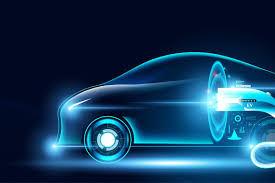
Breaking News
 Melee in Idaho after guy yells "F Charlie Kirk" at video
Melee in Idaho after guy yells "F Charlie Kirk" at video
 BREAKING: TMZ has released video showing the Charlie Kirk assassination suspect...
BREAKING: TMZ has released video showing the Charlie Kirk assassination suspect...
 Why Some People Live to 100 (And Others Don't)
Why Some People Live to 100 (And Others Don't)
 Reacting to Charlie Kirk Being Assassinated
Reacting to Charlie Kirk Being Assassinated
Top Tech News
 Tesla Megapack Keynote LIVE - TESLA is Making Transformers !!
Tesla Megapack Keynote LIVE - TESLA is Making Transformers !!
 Methylene chloride (CH2Cl?) and acetone (C?H?O) create a powerful paint remover...
Methylene chloride (CH2Cl?) and acetone (C?H?O) create a powerful paint remover...
 Engineer Builds His Own X-Ray After Hospital Charges Him $69K
Engineer Builds His Own X-Ray After Hospital Charges Him $69K
 Researchers create 2D nanomaterials with up to nine metals for extreme conditions
Researchers create 2D nanomaterials with up to nine metals for extreme conditions
 The Evolution of Electric Motors: From Bulky to Lightweight, Efficient Powerhouses
The Evolution of Electric Motors: From Bulky to Lightweight, Efficient Powerhouses
 3D-Printing 'Glue Gun' Can Repair Bone Fractures During Surgery Filling-in the Gaps Around..
3D-Printing 'Glue Gun' Can Repair Bone Fractures During Surgery Filling-in the Gaps Around..
 Kevlar-like EV battery material dissolves after use to recycle itself
Kevlar-like EV battery material dissolves after use to recycle itself
 Laser connects plane and satellite in breakthrough air-to-space link
Laser connects plane and satellite in breakthrough air-to-space link
 Lucid Motors' World-Leading Electric Powertrain Breakdown with Emad Dlala and Eric Bach
Lucid Motors' World-Leading Electric Powertrain Breakdown with Emad Dlala and Eric Bach
 Murder, UFOs & Antigravity Tech -- What's Really Happening at Huntsville, Alabama's Space Po
Murder, UFOs & Antigravity Tech -- What's Really Happening at Huntsville, Alabama's Space Po
Devices That Work

About 100 years ago, there were battery powered vehicles that did work, mainly because they were not pushed by the government and because they were not devices. The distinction is important.
A battery powered vehicle such as the Baker Electrics of 100 years ago were devoid of electronics. They had deep cycle lead acid batteries connected in series and these were in turn connected to the simple electric motor that turned the drive wheels. There was a switch that turned the electricity on and off. But no electronics controlling anything because it wasn't necessary.
Today's devices are laden with complicated electronics that negate the inherent simplicity of the electric drivetrain. These include the electronics that control the thermal management system that is necessary to keep relatively fragile (vs. lead acid) lithium battery packs (which have a lattice of individual cells within the pack) from being damaged by extremes of temperature and also to allow for relatively safe high-voltage "fast" charging – without which it is necessary to plan around home charging, which takes many hours if not overnight. High-voltage "fast" charging has been pushed because it is seen as necessary by those pushing today's devices, which they market as being as practical for everyday use – including long distance driving – as a vehicle powered by an engine.
That is only hypothetically possible via "fast" charging.
The Baker was marketed as a "city" car; i.e., a car that wasn't trying to pretend it could serve as a long distance car. It was very practical as a city car because it had enough range (about 50 miles out and 50 miles back) to make it practical for such use. It would not have been practical if – at the same time – Baker had tried to make it a car that could be driven from one city to another (assuming no overnight layover along the way) because it could be "fast" charged along the way (assuming high-voltage "fast" charging infrastructure had been available 100 years ago). Then it would have had to have had the elaborate and delicate as well as expensive electronics necessary to hand-hold the battery pack along the way – assuming lithium ion or some other fancy kind of battery had been available back then.
Ironically, the lead acid batteries the Baker relied upon to store electricity were in many ways far more practical than lithium ion battery packs. For one thing, they were not dangerous – no small thing.
For another, they could be changed out relatively quickly and easily by the owner. Probably faster, too, than the time it wastes to "fast" charge a lithium-ion battery pack. This typically takes at least 20-30 minutes and that's only enough time to recover a partial (up to 80 percent) charge because any faster charging is likely to damage the battery pack, so the electronics slow down the charging rate to avoid that fate.



